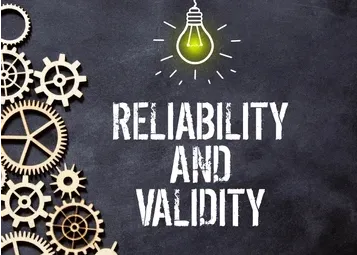Understanding the Validity and Reliability of Pre-Employment Tests
by Testola Team
- Jan 13, 2025
- 7 min read

Understanding the Validity and Reliability of Pre-Employment Tests
In the modern hiring landscape, pre-employment tests have become invaluable tools for evaluating potential candidates. But how can businesses be sure that these assessments are truly effective? The answer lies in two essential scientific principles: validity and reliability. These concepts ensure that pre-employment tests measure what they’re intended to measure and deliver consistent results over time.
What Are Validity and Reliability?
Before diving into the specifics, let’s define these terms:
Validity
Validity refers to how well a test measures what it claims to measure. For instance, a cognitive ability test should accurately assess a candidate’s problem-solving skills rather than unrelated traits.
Reliability
Reliability, on the other hand, focuses on consistency. A reliable test produces similar results under consistent conditions, ensuring fairness and accuracy in the hiring process.
Why Are These Principles Critical?
Pre-employment tests that lack validity and reliability can lead to poor hiring decisions, increased turnover, and a negative candidate experience. Here’s why these principles matter:
Effective Talent Identification
Valid tests ensure that the assessments align with the job requirements, helping employers identify candidates with the right skills and potential.
Consistency Across Candidates
Reliable tests guarantee that all candidates are evaluated under the same conditions, promoting fairness and reducing bias.
Improved Hiring Outcomes
By leveraging scientifically sound assessments, businesses can reduce the risk of bad hires, lowering costs associated with recruitment and training.
Types of Validity in Pre-Employment Tests
To ensure validity, it’s important to understand its different forms:
Content Validity
This ensures the test covers all aspects of the skill or trait being measured. For example, a coding test for developers should assess a range of programming tasks.
Criterion-Related Validity
This evaluates how well test results correlate with job performance. A high correlation indicates the test effectively predicts success in the role.
Construct Validity
This ensures the test measures the theoretical trait it’s designed to assess, such as leadership or critical thinking.
Ensuring Reliability in Assessments
Reliability can be achieved through methods such as:
Test-Retest Reliability
Administering the same test to the same group at different times should yield similar results, indicating stability over time.
Inter-Rater Reliability
For subjective assessments, multiple evaluators should arrive at consistent scores for the same candidate.
Internal Consistency
Questions within the test should correlate, ensuring they all measure the same underlying construct.
How Testola Ensures Validity and Reliability
At Testola, we prioritize scientific rigor in designing pre-employment assessments. Here’s how we guarantee validity and reliability:
Job-Specific Customization
Our tests are tailored to the unique requirements of each role, ensuring content validity and relevance.
Data-Driven Insights
We continuously analyze test performance to refine and improve their predictive accuracy, ensuring criterion-related validity.
Standardized Testing Conditions
Our platform ensures consistency in administration, reducing variability and enhancing reliability across candidates.
Conclusion
Understanding and applying the principles of validity and reliability is key to making informed hiring decisions. At Testola, we’re committed to delivering assessments that meet the highest scientific standards, empowering businesses to build teams that excel.
Ready to take your recruitment process to the next level? Partner with Testola and experience the difference of scientifically sound pre-employment testing. Let’s shape the future of hiring together.